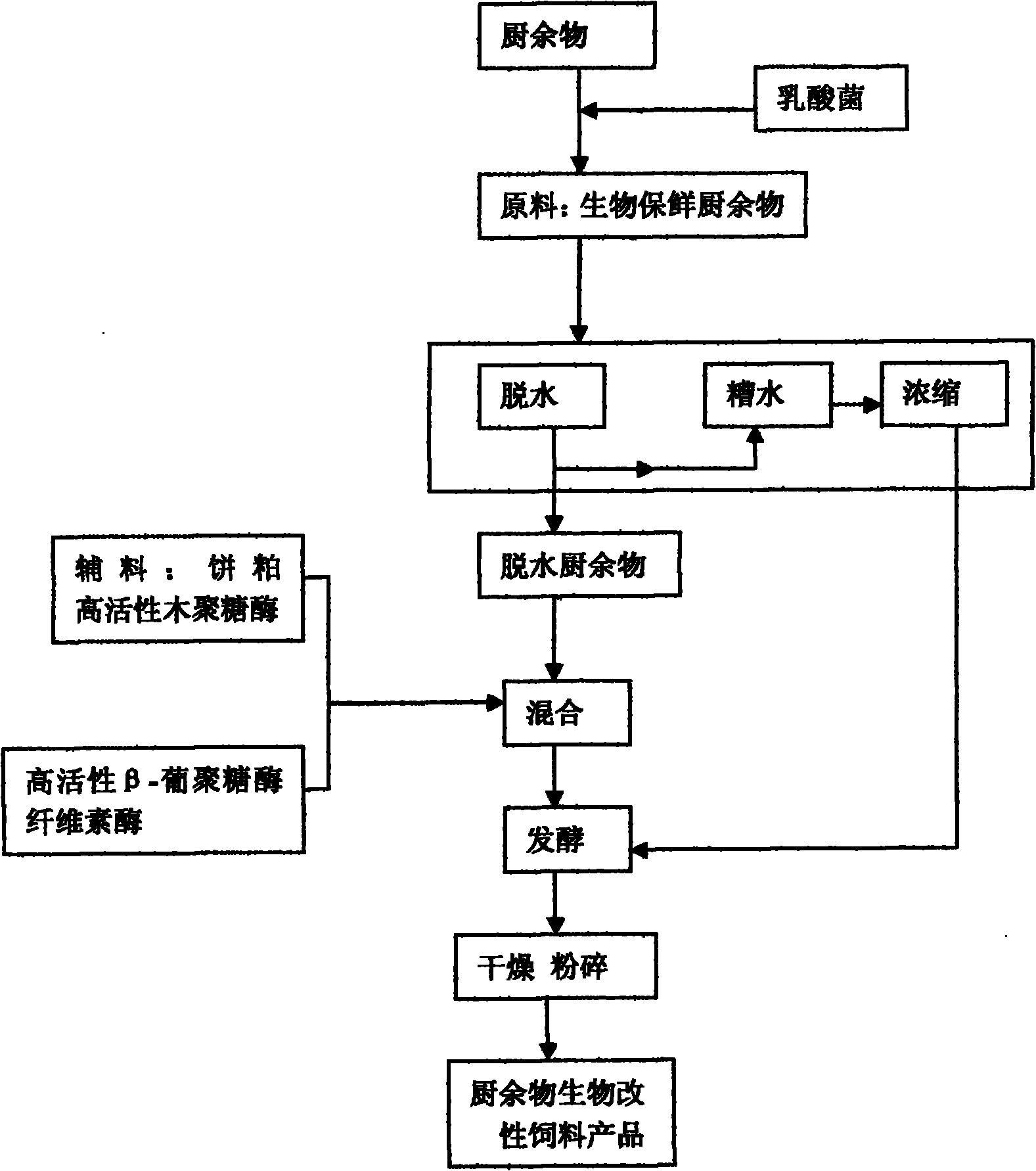Method for producing feed by modifying kitchen residue of catering canteen
A technology of biological modification and kitchen waste, applied in animal feed, animal feed, application, etc., can solve the problems of no industrial development, high conversion cost, and prominent safety problems
- Summary
- Abstract
- Description
- Claims
- Application Information
AI Technical Summary
Problems solved by technology
Method used
Image
Examples
Embodiment 1
[0037] according to figure 1 Shown, a kind of method for the biomodification production feed of restaurant kitchen residue, its steps are as follows:
[0038] (1) Biological preservation of kitchen waste: add 1 kg of Lactobacillus plantarum agent to a kitchen waste collector with a volume of 100 liters. Once kitchen waste is produced, pour it into the collector in time and stir quickly Evenly, and then keep it in a static state until the collector is full; after that, the food waste in the collector is sent to the biological fermentation plant for dehydration and next biological treatment;
[0039] (2), raw material preparation: the preparation raw material is 400 kilograms of water content and be 60% the food and drink of the fresh dining hall (dry food and eating hall kitchen waste is 160 kilograms), be 50% through dehydration water content, be 320 kilograms of water-containing food and drink Canteen kitchen waste, auxiliary material is cotton meal;
[0040] (3), mixed ino...
Embodiment 2
[0048] according to figure 1 Shown, a kind of method for the biomodification production feed of restaurant kitchen residue, its steps are as follows:
[0049] (1) Biological preservation of kitchen waste: add 0.1 kg of compound lactic acid bacteria agent (a mixture of plant Lactobacillus and acidophilus in any proportion) into a kitchen waste collector with a volume of 50 liters. If the residue is generated, pour it into the collector in time and stir it quickly, then keep it in a static state until the collector is full; after that, send the food residue in the collector to the biological fermentation plant for dehydration and drying;
[0050] (2), raw material preparation: the raw material is 200 kilograms of dry food kitchen waste, and the auxiliary material is rapeseed meal;
[0051] (3), mixed inoculation with raw materials and auxiliary materials:
[0052] a, take by weighing 10% of raw material dry weight, namely 20 kilograms of auxiliary material rapeseed meal for su...
Embodiment 3
[0059] according to figure 1 Shown, a kind of method for the biomodification production feed of restaurant kitchen residue, its steps are as follows:
[0060] (1) Biological preservation of kitchen waste: Add 0.5 kg of Lactobacillus acidophilus bacteria agent into a kitchen waste collector with a volume of 150 liters. Once there is food waste, pour it into the collector in time and quickly Stir well, and then keep it in a static state until the collector is full; after that, the food waste in the collector is sent to the biological fermentation plant for dehydration and next biological treatment;
[0061] (2), raw material preparation: prepare raw material to be 1500 kilograms of water content and be 80% catering kitchen waste (300 kilograms of dry meal catering kitchen food), dehydration to water content is 70%, be 1000 kilograms of water-containing food canteen Kitchen waste, auxiliary materials are cotton meal and soybean meal;
[0062] (3) Mixed inoculation of raw materi...
PUM
 Login to View More
Login to View More Abstract
Description
Claims
Application Information
 Login to View More
Login to View More - R&D
- Intellectual Property
- Life Sciences
- Materials
- Tech Scout
- Unparalleled Data Quality
- Higher Quality Content
- 60% Fewer Hallucinations
Browse by: Latest US Patents, China's latest patents, Technical Efficacy Thesaurus, Application Domain, Technology Topic, Popular Technical Reports.
© 2025 PatSnap. All rights reserved.Legal|Privacy policy|Modern Slavery Act Transparency Statement|Sitemap|About US| Contact US: help@patsnap.com


